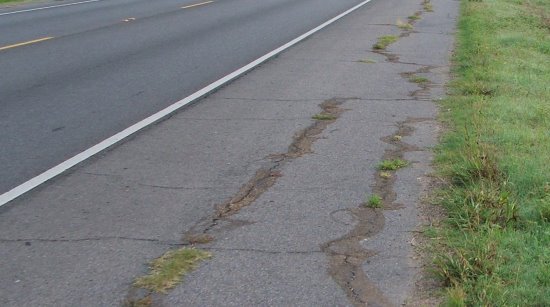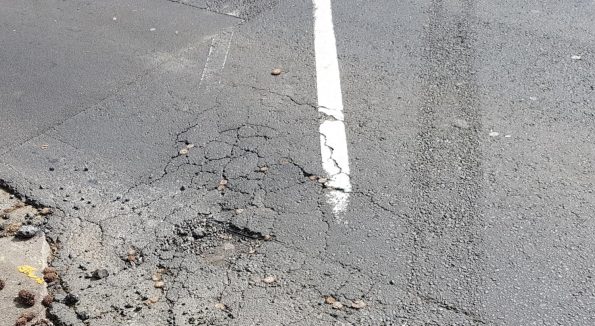Potholes are dotted all over our highways and byways, with local councils always playing catch-up to fill them in. It’s an expensive, never-ending job which, hopefully, will be fixed soon with self-healing asphalt.
Until that arrives, we have to put up with them, but how do potholes form?
It’s a simple process that involves water and gravity.
- Water drains through cracks in the road surface
- It washes small particles away and helps compact the road’s substrate in weak areas
- As vehicles drive over it, the surface flexes, compressing into the weak spot
- The water is compressed to, further eroding and weakening areas around it
- If the area is subject to frosts, the water expands as it freezes, causing the asphalt to push up, weakening it further.
- Alligator cracking forms
- Eventually, one of the smaller blocks is pulled out of the alligator cracking by a vehicle’s tyre
- Now the pothole can grow much faster as the edges are crushed
- Rain accelerates the process by filling up the pothole and washing away some of the substrate, further undermining it.
- Once it’s big enough for the local council to notice, they’ll come and fill it.
Trucks create more degradation than cars because of their additional weight.
What causes the weakness in the road?
Budgets: the asphalt isn’t thick enough to support the weight of the vehicles because it’s expensive to build roads, so they build them to a minimum standard based on the type and volume of traffic.
Drainage: if water can’t drain away, it sits under the surface causing problems. A good surface means water can flow to the edge of the road and into the drains or verges.
Edges: on rural roads, the asphalt meets the verge and this spot is weak. If it gets continual traffic, like on the inside of a corner where drivers cut it, it will break down on the edge forming a pothole that spreads from the inside of the curve

Rural roads with grass edges get damaged easily
Maintenance: poor maintenance techniques cause cracks
Mistreatment: vehicle accidents can create gouges in the road surface, as can flat tyres if the vehicle continues to drive on the rim. Cars doing burnouts weakens the surface, too.
Utilities: metal plates to access underground services have a weak spot all around them where the asphalt butts up to them. Trenches cut into the road to repair subterranean pipes also cause weak spots. Induction loops for traffic light sensors have cuts in the surface that cause weak spots.

This pothole has developed where the induction loop is at traffic lights. The incision in the asphalt for the induction loop creates a weak point. You can see the alligator cracking around the pothole, which isn’t yet that big but is on the cusp of growing. Loose stones that have been pulled out of the pothole surround it.
Unsealed roads: unsealed roads have depressions where water (puddles) can accumulate and start to weaken the underlying structure of the road. These wet patches dissolve dirt from the road which is carried away on vehicle tyres.
All this makes you wonder whether flying cars would solve our pothole problem!
